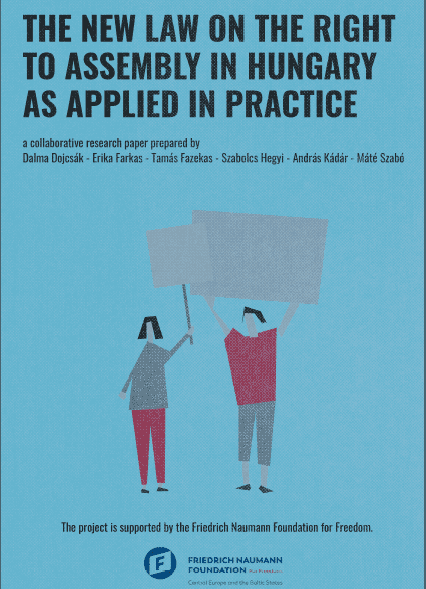
Research paper on the new Hungarian assembly law as applied in practice
The new Hungarian assembly law, adopted in 2018, provides an opportunity for the police to impose undue restrictions on the right to peaceful assembly. Although courts seek to preserve the level of judicial protection of this fundamental right, in several cases, administrative requirements deprive organisers from the possibility of substantive judicial review.
Translation is available for this content
Váltás magyarra On 1 October 2018, a new assembly law came into force, replacing one of the most important laws of the democratic transition in Hungary: Act III of 1989, adopted almost 30 years ago. Act LV of 2018 significantly transformed the legal framework of demonstrations: it redefined the notion of assembly, reshaped the prior notification process and the terms of holding rallies on public and private venues, widened the scope of prior bans, and vested the police with new tools to restrict demonstrations. Overall, the new regulation provides a wider margin of discretion for the police to restrict the right to assembly.
On 1 October 2018, a new assembly law came into force, replacing one of the most important laws of the democratic transition in Hungary: Act III of 1989, adopted almost 30 years ago. Act LV of 2018 significantly transformed the legal framework of demonstrations: it redefined the notion of assembly, reshaped the prior notification process and the terms of holding rallies on public and private venues, widened the scope of prior bans, and vested the police with new tools to restrict demonstrations. Overall, the new regulation provides a wider margin of discretion for the police to restrict the right to assembly.
The domestic case law developing under the new legislation has an outstanding significance both for organisers and participants of assemblies, as well as for the police. The judicial interpretation of the law constitutes an important guarantee for organisers against arbitrary application of the law, and at the same time, it can serve as an indication for authorities on how to apply the new law in a way that is conform with constitutional criteria.
In 2020, lawyers of the Hungarian Civil Liberties Union and the Hungarian Helsinki Committee carried out a research, funded by the Friedrich Naumann Foundation, in the field of assembly law. The aim of the research was to look into the judgments and decisions delivered by courts and the police in the one and a half year that lapsed since the entry into force of the new assembly law, and to assess the impact of the new regulation and its application on respect for freedom of assembly as a fundamental right. The first court decisions have ruled, amongst others, on the following:
- What procedural rules shall apply when the authorities decide that a notification falls outside the scope of the assembly law?
- What are the consequences of lack of compulsory legal representation before courts in assembly cases?
- How shall the police proceed when negotiating with the organisers prior to the assembly?
- Does the right to assembly imply the right to slow down the traffic?
- Under what terms can extreme right-wing assemblies be banned?
- Is it possible to restrict a demonstration to be held in front of the Parliament with reference to a collision with the protection of cultural heritage?
The results of the research show that in many cases, the new law has provided an opportunity for the police to impose undue restrictions to the right to peaceful assembly. Although courts seek to maintain the constitutional traditions of Hungarian assembly law and to preserve the level of judicial protection of this fundamental right, in several cases, administrative requirements deprive organisers from the possibility of judicial review as to the substance.
Conclusions of the research, including the issues revealed by the jurisprudence, have been summarized in a joint article drawn up by lawyers of the Hungarian Civil Liberties Union and the Hungarian Helsinki Committee. The article is available in English here:
The New Law on the Right to Assembly in Hungary as Applied in Practice